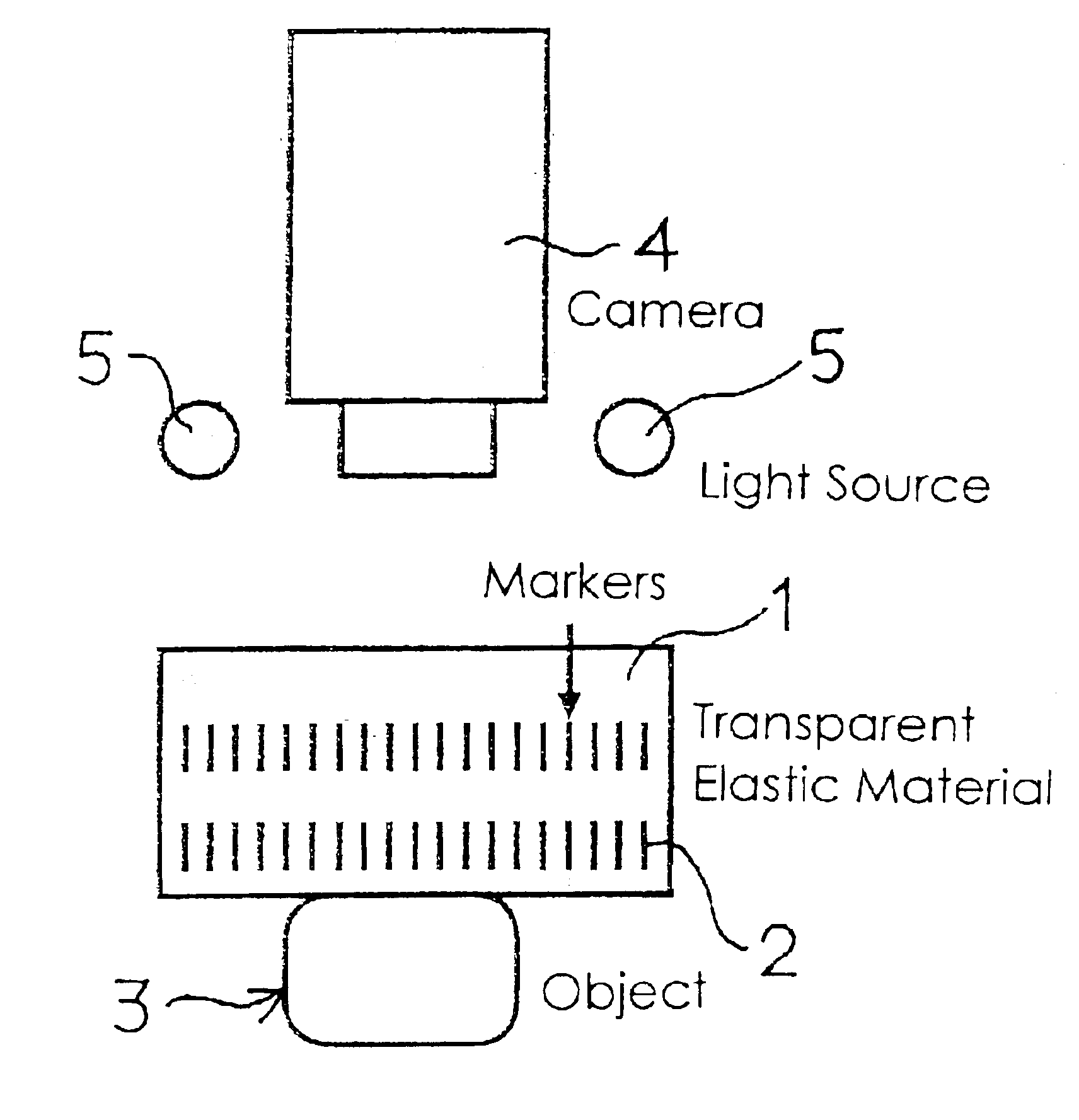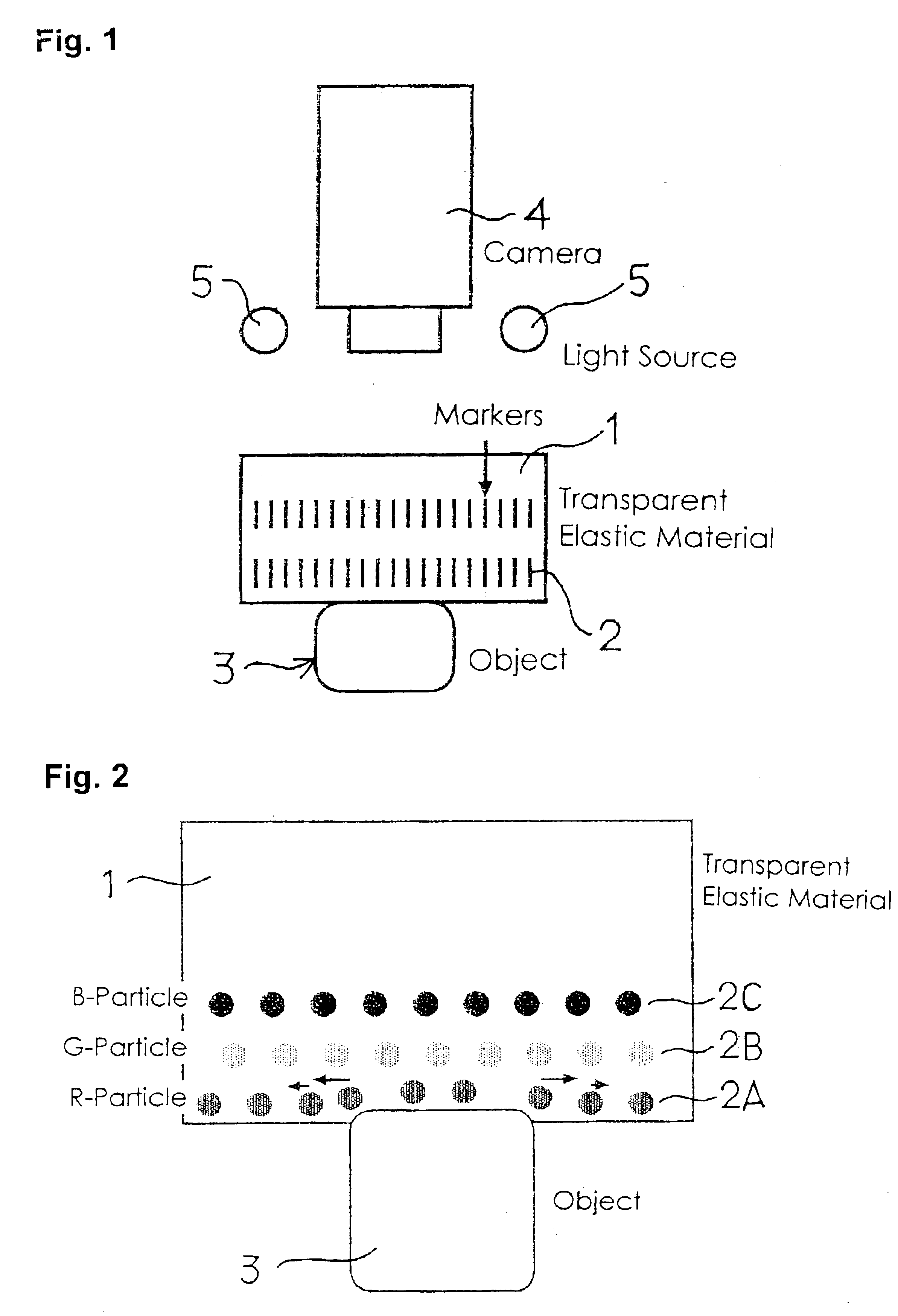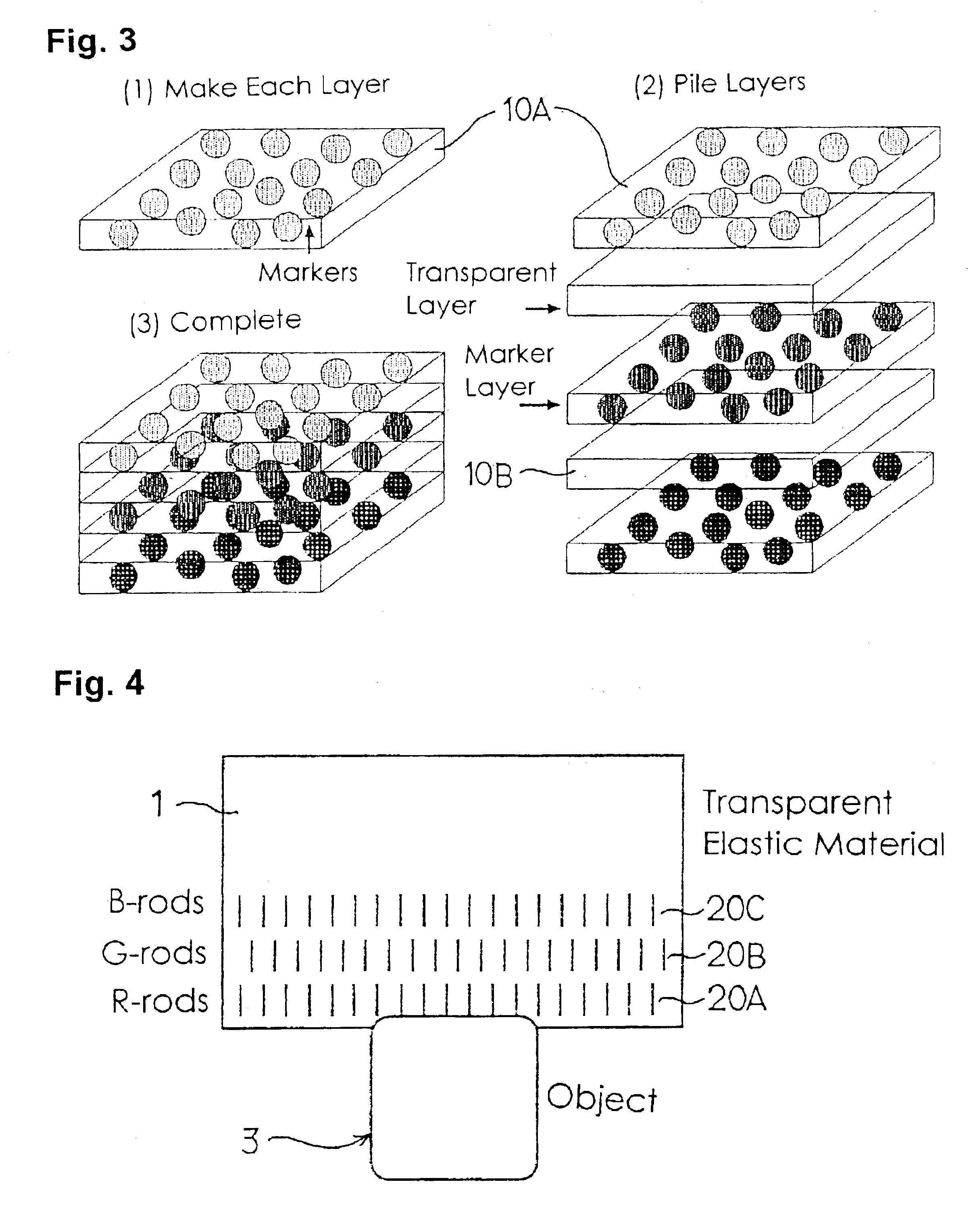Optical tactile sensor having a transparent elastic tactile portion
a tactile sensor and optical technology, applied in the field of optical tactile sensors, can solve the problems of inability to determine whether the force is perpendicular to the surface, acting horizontally, or unable to solve the lack of a solution
- Summary
- Abstract
- Description
- Claims
- Application Information
AI Technical Summary
Benefits of technology
Problems solved by technology
Method used
Image
Examples
first embodiment
[0037]The first embodiment has spherical markers arranged in a depth direction. As shown in FIG. 2, microscopic colored spherical particles are used as the markers, and these are distributed separately in a plurality of layers according to color. For example, if they are divided into RGB (red, green and blue), these are simple to perceive by separating for each layer using color filters of a camera. With the arrangement shown in the drawing, a marker group 2A made up of red microscopic spherical markers is embedded in the shallowest section (the side distance from the camera) from a surface of the transparent elastic body 1 that an object 3 comes into contact with, a marker group 2B made up of green microscopic spherical markers is embedded in a section that is deeper than the layer marker group 2A is embedded in, and a marker group 2C made up of blue microscopic spherical markers is embedded in a section that is deeper than the layer marker group 2B is embedded in (the side close t...
second embodiment
[0045]A second embodiment of the present invention will now be described based on FIG. 4 and FIG. 5. With the second embodiment, markers are extremely thin cylinders or columns having microscopic cross sections and in the drawings the markers are embedded vertically inside a transparent elastic body. The markers extend along imaginary lines connecting an object coming into contact with the elastic body and a camera. A marker group is formed in an elastic body 2 by providing a large number of markers in rows at a specified depth, with markers being provided in three stages at differing depths. In the drawings, a marker group 20A made up of extremely thin red cylindrical markers is embedded in the shallowest section from a surface of the elastic body 1 that an object 3 comes into contact with, a marker group 20B made up of extremely thin green cylindrical markers is embedded in a section that is deeper than the layer marker group 20A is embedded in, and a marker group 20C made up of e...
third embodiment
[0051]A third embodiment of the present invention will now be described based on FIG. 7. Extremely thin strips are used as the markers (for example, about 0.001 mm), and a large number of strips are aligned in parallel to constitute a marker group. Also, other color codes marker groups are aligned at a different angle to the first marker group. In the drawing, as one preferred aspect, two marker groups 200A (marker group comprising a plurality of thin red strips arranged in a row) and 200B (marker group comprising a plurality of thin blue strips arranged in a row) are aligned so that respective markers are orthogonal to each other, but the spatial arrangement relationship between the plurality of marker groups is not limited. It is also possible for the two sides of the strips constituting the marker to have different colors.
[0052]The strip shaped markers are embedded inside a rectangular parallelepiped shaped transparent elastic body 1 having a specified thickness. The strip shaped...
PUM
| Property | Measurement | Unit |
|---|---|---|
| diameter | aaaaa | aaaaa |
| diameter | aaaaa | aaaaa |
| thicknesses | aaaaa | aaaaa |
Abstract
Description
Claims
Application Information
 Login to View More
Login to View More - R&D
- Intellectual Property
- Life Sciences
- Materials
- Tech Scout
- Unparalleled Data Quality
- Higher Quality Content
- 60% Fewer Hallucinations
Browse by: Latest US Patents, China's latest patents, Technical Efficacy Thesaurus, Application Domain, Technology Topic, Popular Technical Reports.
© 2025 PatSnap. All rights reserved.Legal|Privacy policy|Modern Slavery Act Transparency Statement|Sitemap|About US| Contact US: help@patsnap.com



